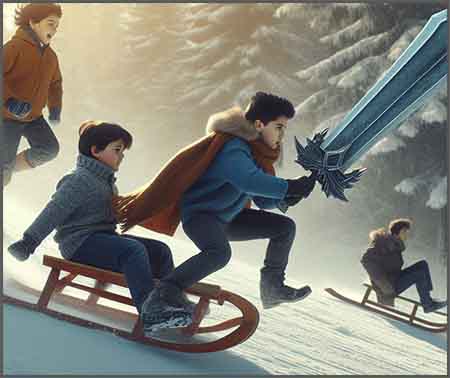Physics & Sledding!
Physics plays a vital role in finding the ideal sledding hill. This weekend, as Maine gears up for a predicted storm, you can make sledding safer and more fun using an online calculator.
Created by physicist Davide Borchia, who holds degrees in physics, this sled ride calculator considers all the factors involved in your downhill adventure. It’s not just about the thrill; it’s also about safety.
Sledding can be risky, especially for children. In the United States, thousands of injuries occur annually during sledding, with over 20,000 children ending up in emergency rooms, according to the American Academy of Pediatrics. These accidents range from bruises to broken bones to severe head injuries, often because sleds and snow tubes can reach high speeds, and kids struggle to control them.
To make sledding safer, Borchia and his team developed a tool to assess the safety of sledding hills. Although the physics behind the calculations may seem complex, the online calculator simplifies everything. You only need to input details like your sled type, hill length, and angle, and it will determine your speed, distance, and stopping point.
Borchia’s colleague, Dr. Anna Szczepanek, also created a similar calculator for building the perfect snowman last year. For Borchia, using physics for sledding just makes sense.
“I’m a physicist, and I apply physics to almost everything,” he explained. “People might find physics obscure, but the secret is that it’s not that hard. We just like to showcase it.”
Keywords:This article was reimagined from: Simple physics can help you find the perfect sledding hill (bangordailynews.com)



Check out our Sports articles: https://bangor.today/c/sports/



